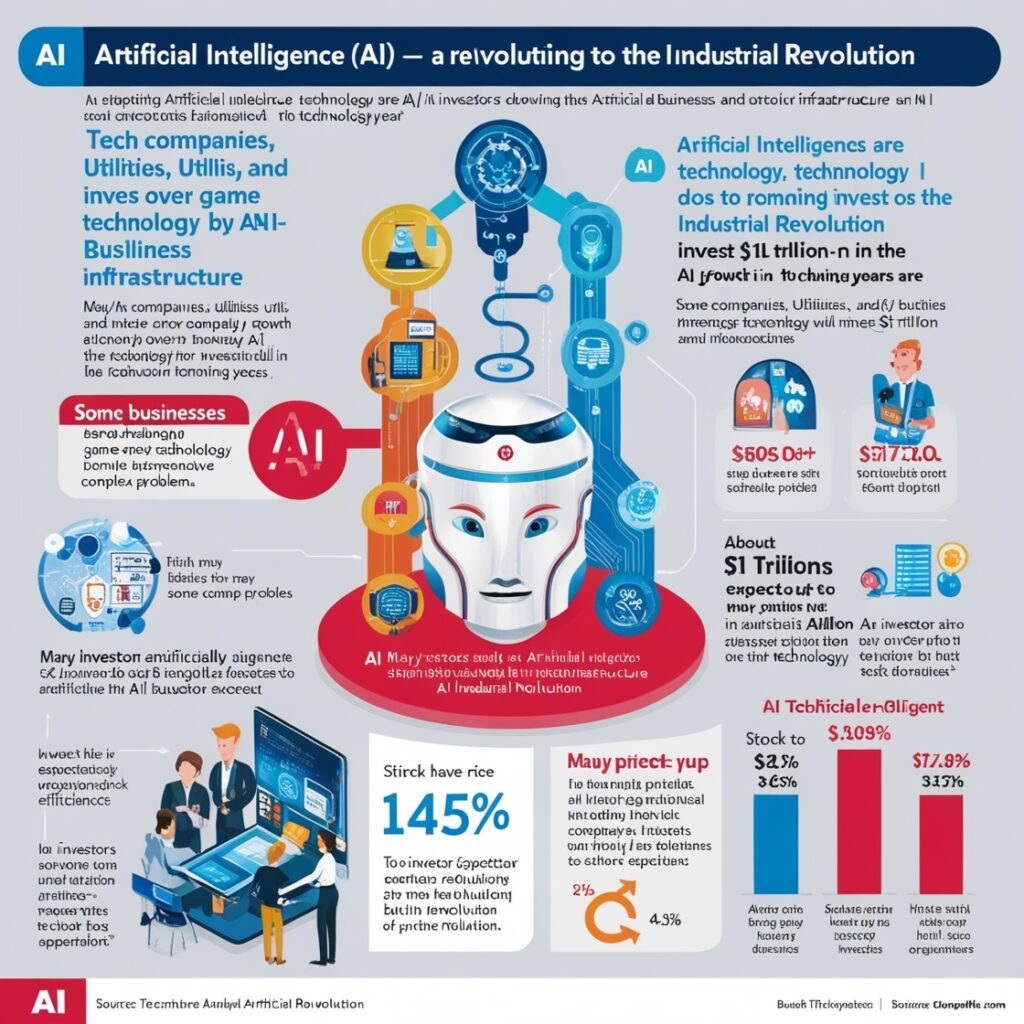
It appears that almost everyone in the investing community has long-term optimism regarding artificial intelligence.
According to Goldman Sachs analysts, during the next few years, tech companies, utilities, and other businesses intend to invest over $1 trillion in AI infrastructure. BlackRock Investment Institute researchers have noted that artificial intelligence (AI) could bring about a revolution comparable to the Industrial Revolution.
Even rank-and-file investors recognize the opportunity. Over the previous 12 months, chipmaker Nvidia—regarded as the front-runner in the AI revolution—has experienced an increase of more than 175%. Approximately 44% of the S&P 500 is comprised of businesses in the tech and communication services industries, which are also the ones investing the most in AI.
According to Christopher R. Jackson, senior vice president at UBS Wealth Management, “you have to be aware of the risk that investors have gotten out over their skis” anytime there is such a quick increase.
He asserts that nobody would argue against AI as a generational investment subject. The issue, in his opinion, is how swiftly things have disappeared, particularly in the short term.
If the recent surges in AI-related tech equities are an indication of enormous productivity gains, investors may be in for some volatility if the revolution occurs a bit later or a little less forcefully than anticipated, according to Jackson.
Can AI live up to the hype?
Despite the excitement surrounding the possible productivity improvements from generative AI, some people are skeptical about the technology’s future rise.
According to Jim Covello, head of global equities research at Goldman Sachs, “the technology will have to be completely game-changing” given what businesses are investing on generative AI applications. He continues, “And it’s not quite there yet.”
According to him, in an interview with Goldman analysts, artificial intelligence (AI) technology is very expensive, and in order to justify those costs, the technology needs to be able to solve complicated problems—something it isn’t made to do.
Professor Daron Acemoglu of the MIT Institute was interviewed by the experts as well. He shared his concerns on the timescale for AI to become a technology that transforms the economy.
According to him, few, if any, of these genuinely revolutionary developments will probably take place in the next ten years given the current focus and design of generative AI technology.
All of these does not negate the fact that AI technology is the way of the future. However, if the future turns out to be later than anticipated, some businesses that are making large investments today can find themselves in risky situations later on, according to Jackson.
Certainly, there is a danger to the thesis: Can businesses keep investing this much money in the absence of any near-term returns? He remarks.
Certain businesses are more flexible than others. According to Jackson, many of the biggest companies on the market have consistent earnings and sufficient cash flows to finance significant capital investments in AI in a sustainable manner. Furthermore, despite mentioning a number of AI naysayers, Goldman Sachs analysts continue to envision a bright future for businesses like semiconductor manufacturers that produce the “picks and shovels” of the AI gold rush.
Nonetheless, a lot of industry observers anticipate that in the future, artificial intelligence would drastically boost company efficiency for a broad range of organizations. Stock prices may suffer if investor enthusiasm wanes and that future proves to be farther off than anticipated, according to Jackson.
Given that large-company technology equities currently trade at a substantial premium to the rest of the market, he claims that this is especially true.
The worry is that the market is constantly looking ahead. How much of the story has been priced into the stocks, and what potential growth rates are already factored into the current prices?” Jackson says. At current valuations, there is little room for error.








